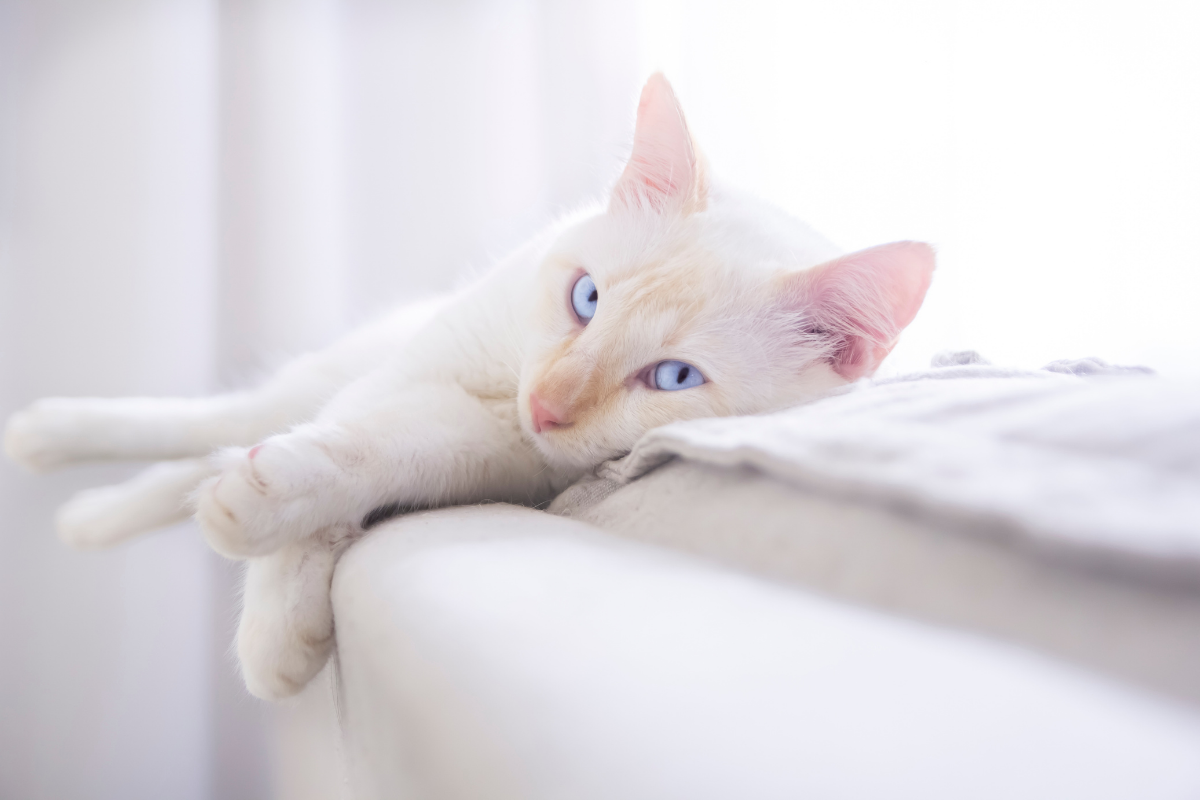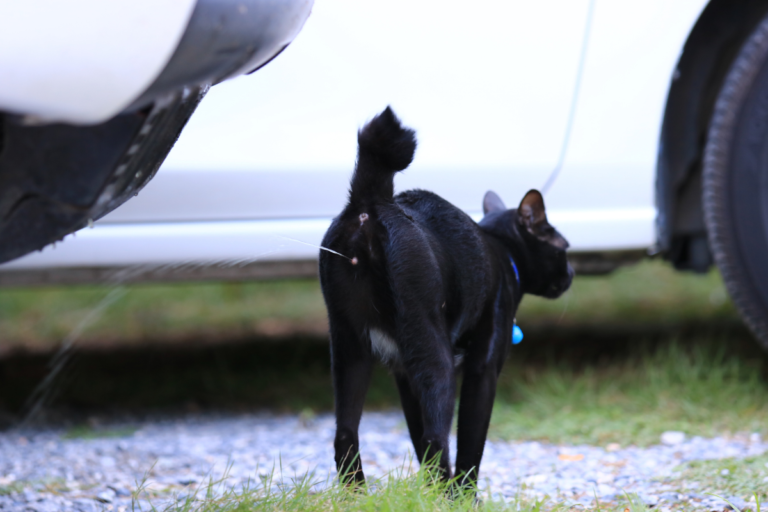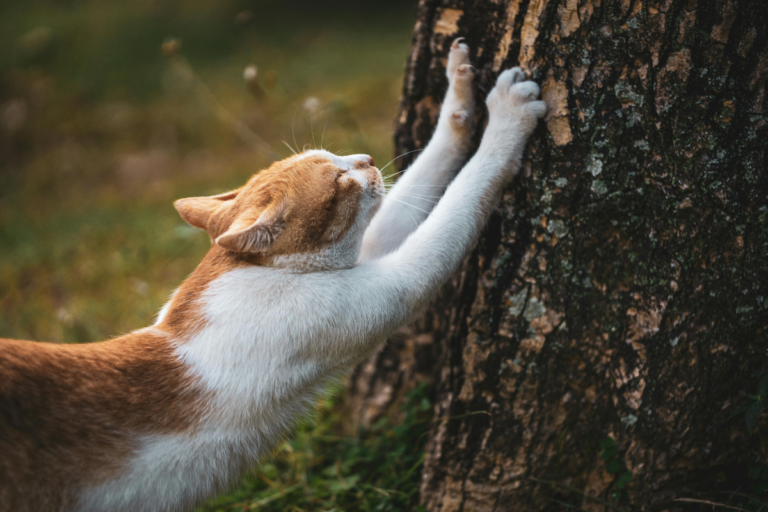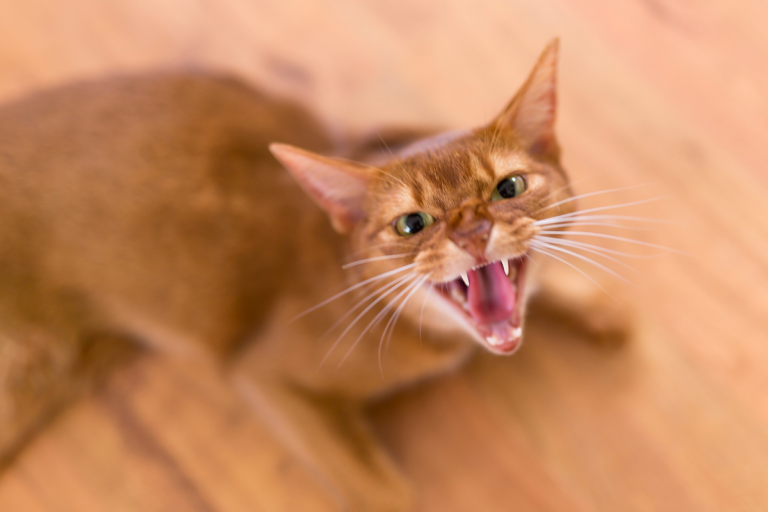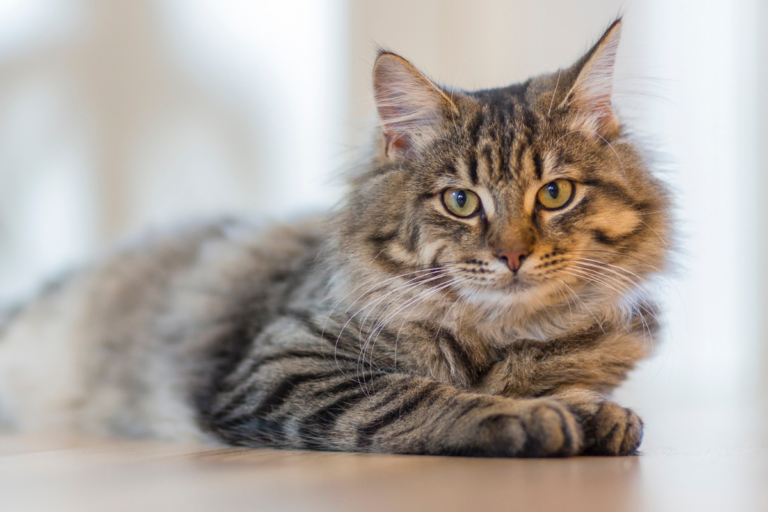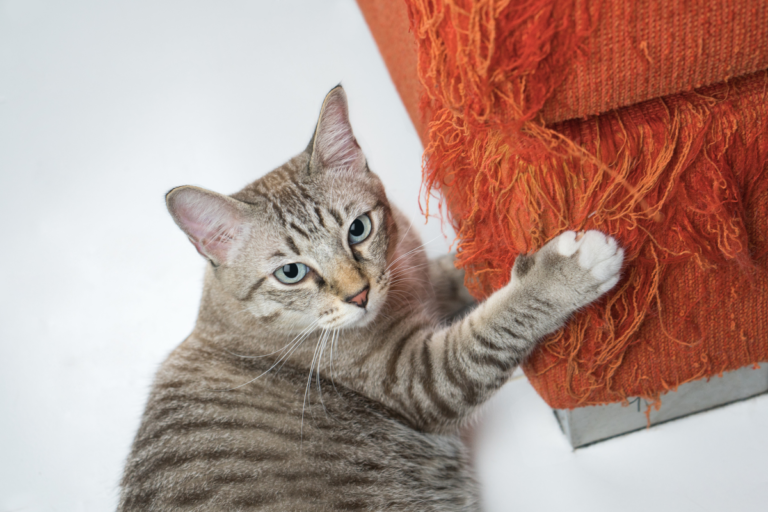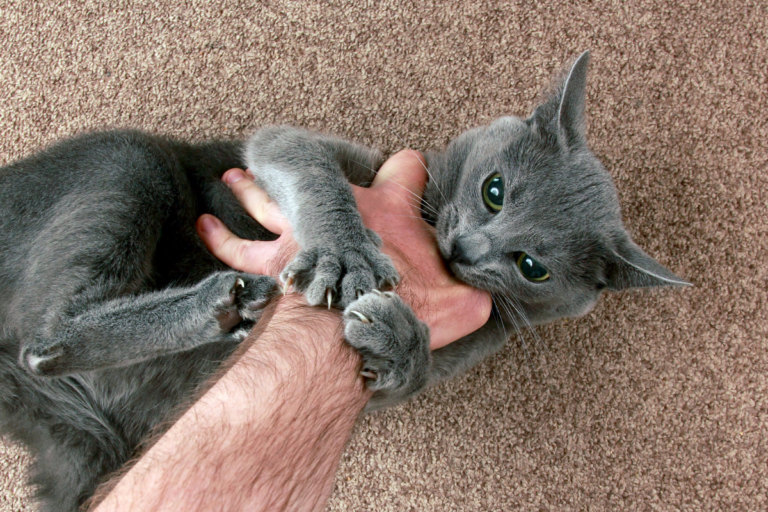Purr-fect Harmony: Decoding Cats Behavior for Cat Owners
Understanding Cat Behavior
Figuring out what your cat’s antics mean is a must for any cat lover. With a little peek into cat body language and the effects of genes and early experiences, you’ll be chatting away with your purring buddy in no time.
Decoding Feline Body Language
Cats love chatting through body language—it’s their vibe check! Ever notice your cat head-rubbing you like they’re trying to buff their own lamp? That’s called “bunting.” They’re leaving their personal autograph of love with the scent from glands on their head, cheeks, and chin. They’re basically saying, “You’re mine!” with a kitty version of a hug (The Drake Center).
Cats also have this cute way of bumping noses, rubbing heads, or making tail hooks with pals. It’s their no-nonsense way of sharing love and friendship—kind of like the pinky swear of cats (PetMD).
Cracking these secret codes helps you know when your kitty is in chill mode or just soaking in the good vibes. Curious about quirky moves like cat head butting or tackling the mystery of cat aggression? We’ve got you.
The Influence of Genetics and Early Life
Cats are like fine wines, and their early days and genes mold every little twinkle in their eyes. The magic window, around the second to mid-seventh week of those teeny tiny kitten days, is where the social butterflies and couch potatoes get stamped. Kittens cuddled and smothered in love during these times are more likely to grow up as your new favorite snuggle buddy (Frontiers in Veterinary Science).
Their breed is like their vibe—some are gym nuts while others just want to Netflix and chill. Here’s a snapshot:
| Breed | Typical Traits |
|---|---|
| Siamese | Chatty, Party Animal |
| Maine Coon | Chill, Friendly |
| Ragdoll | Relaxed, Cuddly |
| Bengal | Energetic, Playful |
| Persian | Calm, Whispers Only |
Peeping into their DNA and upbringing helps untangle those puzzling behaviors. Questions like cat meowing loud or curious about why cat biting is a thing? Swing by our advice hub. Embrace the quirks of your kitty for a bond that’s nothing short of magical.
Common Feline Behaviors
If you’re a cat enthusiast like me, decoding those quirky feline actions can bring you and your whiskered buddy closer together. Let’s dive into some feline shenanigans you might spot around the house.
Head Rubbing and Bunting
Head rubbing, or bunting if we’re getting fancy, is when a kitty smooshes its noggin against you or stuff around the house. This isn’t just because they like the way your jeans feel; they’re slapping on some ‘This is mine!’ scent from their face glands. Whenever my own furball nestles into my leg, it’s their way of saying, “You’ve been chosen,” in the sweetest smug way.
Bringing “Gifts” to Owners
Ever wake up to find a.hem… “gift” from your cat? Yeah, that surprise rat isn’t their way of calling you a lousy hunter. Cats see us as part of the gang, and they just want to share their spoils, maybe even saying thanks for all those treats. Or maybe it’s a bid for some head scratches, who knows? Cats, am I right?
Chattering at Birds
Picture this: your feline friend parked by the window, chattering like they’ve got a lot to say about those busy birds outside. Experts figure it’s part frustration, part excitement, and a dash of predator practice. That sound’s a mix of cute and deadly—nature’s little comedian with a sharp instinct.
Wool Eating and Pica
Alright, if your kitty’s nibbling on the living room rug (or socks or your grandma’s favorite blanket), they might be dealing with pica—craving quirky non-food munchies. Could be anything from boredom, stress, or some medical mumbo jumbo like anemia or hyperthyroidism getting in the way. If my cat starts snacking on more than kibble, I’d ring up the vet fast.
In a bid to keep your furry pal entertained and out of the laundry bin, think about loading up on fun toys and activities. For all things kitty psychology, our section on cat psychology has got your back, giving you the 411 on wrangling those wild furball antics.
Communicating with Your Cat
Getting on the same wavelength as your cat can help you two get along better and keep them happy and healthy. It’s like learning a new language but way more fun. Let’s see what your furry friend is trying to tell you.
Meowing: What Your Cat Is Saying
When cats meow, they’re like little kids trying to get your attention. Could be they’re starving, or maybe they just want some cuddle action. The trick is figuring out what each meow means. Listen to how loud or soft, high-pitched or low, and quick or slow their meows are. Plus, their body talk can fill in the blanks (think headbutts or pacing) (PetMD).
Reasons Cats Meow:
| Reason | Observation |
|---|---|
| Hunger | Loud and frequent meowing while eyeing their empty food bowl |
| Attention | Gentle meows, maybe rubbing against you for good measure |
| Discomfort or illness | Low, nonstop meows with strange behavior |
Curious for more? Check out cats meowing to get the scoop on your kitty’s chatter.
Kneading and Contentment
Ever notice your cat making biscuits? Those rhythmic paw presses on a soft surface, like they’re working dough. Turns out, it’s a throwback to when they were tiny kittens. Kneading means they’re happy, or sometimes just trying to chill out. It’s pure kitty joy or a stress-buster clue (The Drake Center).
When your cat’s in kneading mode:
- They’re probably on cloud nine.
- They might be seeking comfort if something’s bugging them.
Make sure that favorite kneading spot is cozy and safe for your kitty to snuggle up.
Understanding Purring
A cat’s purr is the soundtrack of contentment—or occasionally a sign they’re feeling crummy. It gets tricky because some cats purr when they’re sad or under the weather. So, alongside the purrs, watch out for anything unusual. If your cat’s purring and acting off, maybe it’s time to give your vet a ring (Sylvan Veterinary Hospital).
Why Cats Purr:
| Situation | Possible Reason |
|---|---|
| Contentment | Happy purring when they’re chill or soaking up pets |
| Pain or Stress | Purring plus hiding or odd actions |
Want the full lowdown? Check out the cat psychology and other articles for more about your cat’s purrs.
By getting these cat signals down pat, you can chat with your cat like a pro, creating a stronger bond and keeping them happy. Need more tips? Swing by tips for cat communication.
Behavioral Issues in Cats
Just like folks, cats can have their off days too, complete with attitudes you can’t ignore. So, let’s chat about some things that might have you scratching your head about your furry pal: excessive meowing, litterbox shenanigans, and full-scale fits of cattitude.
Excessive Meowing
That constant yowling isn’t just for show—your furball is undoubtedly trying to say something. Whether it’s a plea for a midnight snack, a call for a bit of petting, or a “Hey, something ain’t right over here,” the key is in deciphering just what they need (Paoli Vetcare).
Why is My Cat So Chatty?
| Reason | What’s Going On |
|---|---|
| Hunger | “Feed me, human.” |
| Attention | “Hey, remember me? Your fluffy buddy!” |
| Discomfort | “Something’s off, and I ain’t feeling 100%.” |
| Anxiety | “Whoa! Who moved my comfy chair?” |
| Boredom | “Yawn… even I can’t nap this much.” |
For those who need more deets, hop on over to our cats meowing page.
Litterbox Problems
So, Fluffy’s decided to ditch the litterbox? Could be their way of waving a little red flag that says, “Houston, we have a problem.” Changes in litter habits might mean a trip to the vet is in order or just a suggestion they ain’t digging their current setup (Sylvan Veterinary Hospital).
Litterbox Lowdown: Keep the Peace
- Check for Health Problems: First stop—the vet, to rule out any sneaky health issues.
- Clean Regularly: When it comes to the box, clean is king.
- Box Placement: A quiet spot away from the bustle might just do the trick.
- Litter Type: Mix up the litter flavors to see what makes them purr.
- Multiple Boxes: Have one more box than cats. Simple math that works!
More insights? Scoot over to our guide on litterbox problems.
Aggression Signs and Solutions
At times, cats can go from cuddly to claws-out in a heartbeat. It’s their way of saying, “Back off, I’m not in the mood.” With signs like hissing or those twitchy tails, you don’t want to push your luck. Catching these vibes early can save you a lot of drama (PetMD).
Spotting a Kitty Tantrum
| Sign | What It Means |
|---|---|
| Hissing | “I’m warning you! Don’t test me.” |
| Growling | “Seriously, scram!” |
| Flat Ears | “You’re stressing me out big-time!” |
| Lashing Tail | “I’m irritated. Don’t even.” |
| “Halloween Cat” | “I might jump out like a horror movie extra, so watch it.” |
Keep your distance if Mr. Whiskers decides it’s one of those days. Attempting to pet an aggressive cat can turn you into a scratch post real quick (Sylvan Veterinary Hospital).
And hey, different breeds bring their own quirks to the table, so digging deeper into orange cat behavior or tabby cat behavior might offer more clues.
For an all-encompassing approach, trot on to our cat aggression page for more tricks on managing these hairy situations.
The Impact of Environment on Behavior
Socialization and Personality Traits
When it comes to raising my little furball, I’ve seen firsthand how some extra love and attention during their early days can play a huge role in shaping behavior. Scooping up your kitten often between their second and seventh week makes them more likely to be pals with people and stay that way for life. Think of it as the magic window for turning your kitten into a cuddly companion. During this 8-16 week phase, it’s like they’re little sponges, soaking up everything around them. A playground of sights, smells, and sounds helps them become confident and chill, keeping fears from creeping into their paws later on.
Breed Characteristics and Behavior
And let’s chat breeds – now, though breeds might have some trademark moves, every furball’s got its special flair. Knowing your cat’s breed mix can sometimes give you a sneak peek at their quirks, like whether they’re a couch potato or the life of the party. Breeds have been molded over time, with various tendencies in mind. For instance, orange cats are often bouncing with energy, while tabby cats might groove to a different beat. But remember, just like snowflakes, every kitty is uniquely crafted.
| Breed | Likely Traits |
|---|---|
| Siamese | Chatty, buddy-buddy, lively |
| Persian | Zen master, chilled, heart the cuddles |
| Bengal | Energizer kitty, smarty-paws, curious kitty |
| Maine Coon | Gentle giant, friendly, playful |
Effects of Life Experiences
Oh, and life experiences? They leave their paw prints all over a cat’s character. Cats who’ve roamed the wild outdoors might tend to guard their turf fiercely, while those pampered in loving homes get all cozy and sociable. Experience shapes personalities, and understanding these nuances can shed light on why your cat behaves a certain way. Is your kitty channeling their inner Bruce Wayne, hiding in shadows? Or are they showing some feisty, spirited moves?
And when it comes to their moods, cats can run the emotional gamut, impacting their health and happiness. Moody cats might face the risk of being given away, while scaredy-cats might get sick more often. Recognizing these influences means I can craft an environment that lets my whiskered buddy thrive. Catering to their instincts and providing the right kind of love ensures both my kitty and I enjoy a peaceful cohab, celebrating our furry family member’s distinct personality.
Responding to Cat Behavior
Getting a grip on cat behavior can really make life with your whiskered buddy way more enjoyable. Let’s dig into recognizing when they’re not feeling great, cracking the code on their tail talk, and boosting their confidence.
Recognizing Signs of Pain
Our fluffy pals are champs at hiding when they’re hurt, so it’s up to us to catch those drop hints they give. Here’s what to watch for if you think your cat’s got some aches and pains:
- Grooming less or more often (anything outta the norm)
- Not wanting to chow down
- Hiding away in their own little world
- Don’t wanna be touched or lifted up
- Seem lazier than usual
Cats in pain might get crabby or steer clear of what they used to enjoy doing. Keeping an eye on their litterbox habits can spill the beans on their health, too. If anything seems off, it’s time for a trip to the vet.
| Symptom | What It Might Mean |
|---|---|
| Skipping the grooming | Could be hurting or feeling ‘blah’ |
| Skipping meals | Maybe sick or just anxious |
| Sudden snappy attitude | Could be dealing with pain-related issues |
| Doesn’t like petting | Might be physically uncomfortable |
Interpreting Tail Postures
Cats have mood rings on their butts—yep, I’m talking about their tails. Here’s a handful of tail talk clues:
- Tail Up: Your cat’s feeling pretty good, maybe even saying, “Let’s be friends!”
- Tail Puffed Up: Whoa, back off, this kitty’s scared or ticked.
- Tail Tucked: Your little kitty is nervous, feeling out of sorts.
- Tail Wagging: Watch out—usually means your cat’s irritated, not happy like a dog.
For more fun on this topic, you might wanna check out our piece on cat psychology.
Nurturing Confidence in Cats
Helping your cat feel like the king or queen of their castle really boosts their mood. Confident cats are curious explorers; shy ones? Not so much. Here’s how to get your cat strutting their stuff:
- Safe Zone: Make sure there’s a cozy, quiet spot for your cat to escape to when the world feels like too much.
- Play Often: Get’ em moving with toy mice or feathery things on a string—it sparks their hunter spirit.
- Say “Good Kitty!”: Giving love or a treat for exploring encourages more of that behavior.
- Meet and Greet: Gradually introducing new sights, sounds, and peeps helps your cat feel less like crawling under the sofa.
Encourage your kitty to be part of the action at home. And for more cool cat confidence tips, swing by our article on nurturing confidence in cats.
Understanding what’s ticking your cat off and responding just right can make both of you way happier. For more down-to-earth advice on handling quirky cat habits like constant meowing, nipping, and litterbox hiccups, snoop around our other articles.
